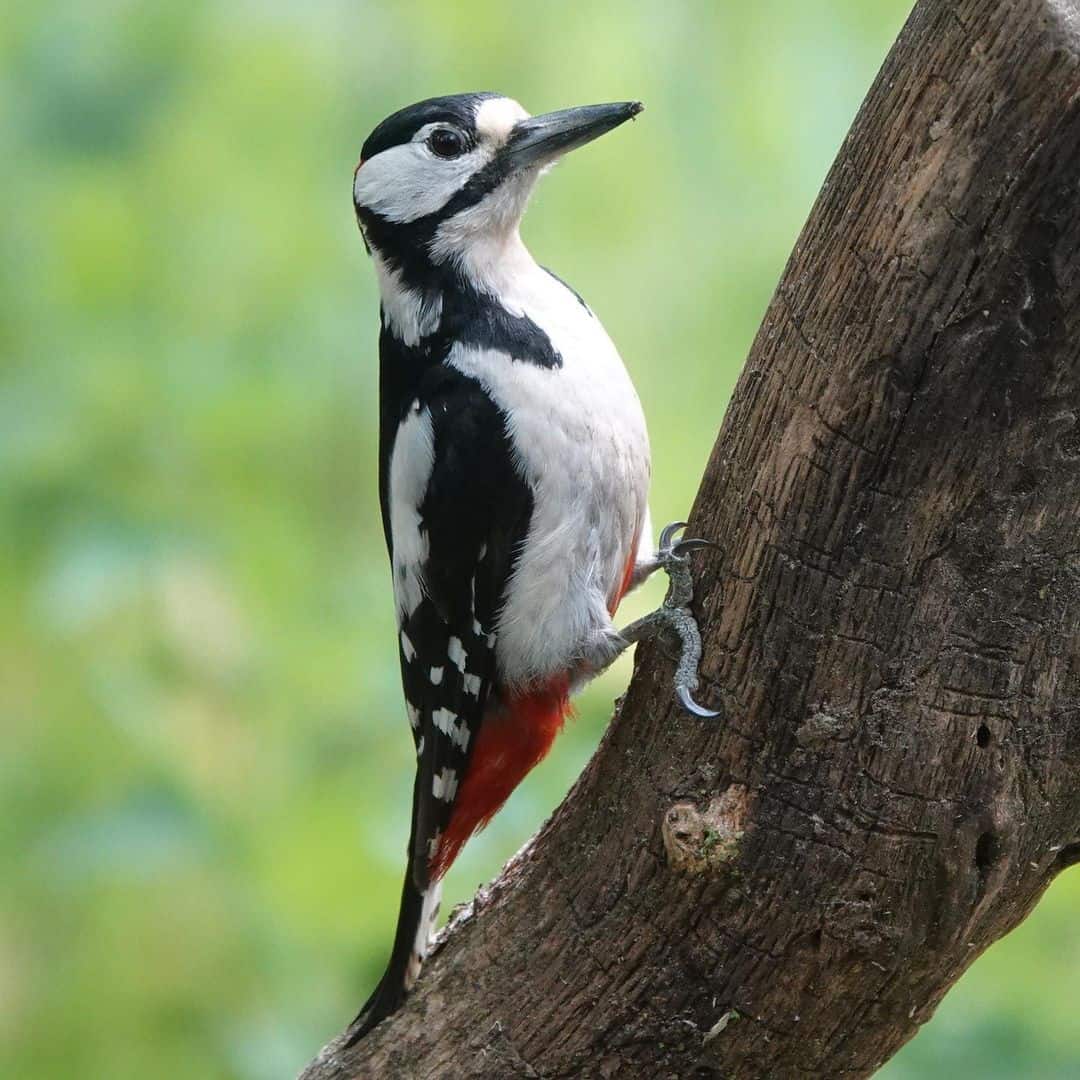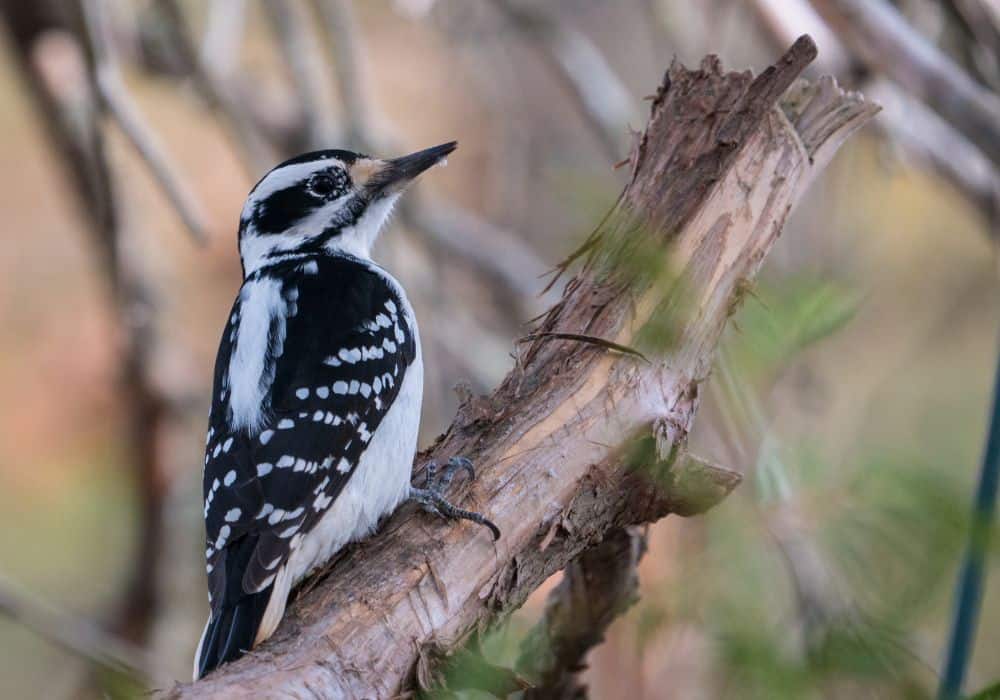Woodpeckers are fascinating birds with the unique ability to make distinct drumming sounds with their strong beaks. Unfortunately, their drilling activities can sometimes damage wooden structures around you, making their existence bothersome, hence the question, how to get rid of woodpeckers?
To deter woodpeckers from coming to your home, you must consider eliminating things that attract them. Also applying effective deterrents, installing barriers, or using nest boxes are some of the other ways of keeping these drumming birds away.
Here, you will learn more about the wonder bird we call woodpeckers and the most humane ways to eliminate them from your surroundings. Read on for better insight into this subject.
How to Identify a Woodpecker?
Choosing a humane method to rid your home and immediate environment of these birds largely depends on if you can correctly identify one. There are three ways to identify these birds either
- By their physical attributes
- their behavior with their habitat and
- survival.
1. Identifying Woodpeckers by Physical Features
The first factor to note is that not all woodpeckers have the same physical attributes and this is because there are several species of woodpeckers, leading to some notable differences among these birds.
However, for the purpose of this discussion, we will review the common features that help to differentiate these birds from others.
- Size: Woodpeckers commonly range 7 to 15 inches in length
- Color: The color of these birds usually varies by species but a common feature among them is the presence of a red mark on the heads of the males with a black and white design on most of their feathers
- Appearance: Like other birds, woodpeckers have claws on their two feet for landing and support with a prominent sharp beak that they use for wood pecking
Remember that this description does not apply to all woodpeckers. There are different species of woodpeckers and it would be best if you are familiar with them so that you do not get confused when you see a bird with slightly different features.
2. Identifying Woodpeckers by Behavior
Another factor that helps you identify if you are indeed observing a woodpecker is their behavior in the environment. Once you can correctly attribute certain bird behavior to a woodpecker, then you can go on with learning how you can get rid of them.
One behavior specific to the woodpecker is the attraction these birds have to structures with specific characteristics. These include wooden areas, surfaces that make clear sounds, and those housing a food source.
Furthermore, you must know that these birds communicate through sounds (churrs, screeches, purrs, rattle, and more) making it a major part of their behavior and any action around sounds in their environment will determine how they react.
3. Identifying the Woodpeckers’ Habitat and Survival
Woodpeckers are common in many parts of the world with no limitations to North America, Europe, and parts of Asia. Although these birds contribute largely to our ecosystem, they come with problems like the damage they leave on certain surfaces.
Most woodpecker species are more common in the forest, where they can search for meals like insects and bugs along tree trunks to help them survive. Nonetheless, you will likely find them in urban areas during their mating season, and will come around more if you have suet or bird feeders around.
When in their natural habitat, you will find these peckers in trees and branches because of the wooden surface it provides along with an abundance of insects that serves as food to the woodpeckers and a place for them to build their nests.
Additionally, you should know that these birds are migratory by nature. They may leave their nesting area for a while but will always return to their marked territory after a while which should help you prepare to handle the situation when they do return.
Once a bird establishes a roost on your property, they establish a strong connection with that area, making it almost impossible for them to leave on their own.
5 Effective Ways to Get Rid of Woodpeckers

Image Credit: mels_nature_pics
Here, we have carefully selected the most humane ways to help you eliminate these birds. The methods listed here explore some non-lethal and eco-friendly means to help you limit woodpecker infestations. Learn more below.
1. Eliminate the Attractant
One major reason why woodpeckers would be attracted to your environment is the presence of an attractant in the area and most commonly, a food source that comprises insects like carpenter ants, carpenter bees, and termites. If you want to eliminate these peckers naturally, you will have to take away that food source.
A woodpecker is an omnivore, so, their diet will comprise other pests that you can find on other wooden structures around you. So, if you have a pest-infested tree or wood with termites living in it, now is the time to let it go.
To eliminate these pests living on your wooden surfaces, you can consider spraying an insecticide, but if this is not enough, you may need to call an exterminator to help you address this issue.
2. Apply Woodpecker Deterrents
Deterrents are another safe method that helps discourage woodpeckers. These deterrents can come in two ways. You can either apply visual deterrents or auditory deterrents to help this purpose.
- Visual Deterrents
Placing shiny objects like reflective tape, small mirrors, or old CDs beside the bird’s nesting site can help to scare woodpeckers by creating confusing and disturbing flashes that mimic fire or predators.
An alternative to this is hanging windsocks, helium balloons, or a bright mylar balloon which create movement, thereby deterring them from pecking. You can also consider other deterrents like aluminum foil, pinwheels, or reflective tape.
Another way to apply these visual deterrents is to employ a decoy. Woodpeckers see other birds like owls and hawks as natural predators, so if you hang decoys depicting these other birds, a woodpecker will avoid that environment at all costs.
Consider applying visual deterrents that look very realistic and place them in areas with high wind. This will help convince the woodpecker to stay away from the surroundings.
- Auditory Deterrents
Woodpeckers rely on their drumming sounds for communication, marking their territory, and searching for food. Therefore, any other loud sound in your surroundings will discourage woodpeckers from returning to that area.
A common deterrent to this effect is playing sounds that mimic those of their predators, which makes them feel they are being hunted and prompts them to run. You can also consider banging pots together, wind chimes, or an air horn to help you create loud noises.
N.B – Wind chimes are quite effective because they double both as a visual deterrent and an auditory deterrent.
3. Install Barriers
This refers to obstacles set in place so that woodpeckers can no longer gain access to your surroundings. Obstacles like bird netting or chicken wire will work to this effect, and all you need to do is hang them around you to prevent woodpeckers from flying in.
Applying these barriers over certain surfaces like window frames or eaves creates a reliable barrier while allowing air circulation. For larger spaces, installing bird screens or wooden barriers can protect the structure without compromising the area’s aesthetics.
Alternatively, you can wrap aluminum foil over the damaged areas to create a barrier or plug the preexisting holes with wood putty so these birds can no longer access the marked surface if there is no bird netting around.
4. Use Nest Boxes
If woodpeckers have a comfortable nesting space, the chances that they would peck on your wooden surfaces and constitute a nuisance becomes limited. This is why nest boxes are one of the safest methods you can use when trying to eliminate food peckers from unwanted spaces.
Offering alternative nesting options to these birds can shift their attention away from areas you do not want to see damaged and installing birdhouses specifically designed for woodpeckers will provide better nesting conditions that these birds find attractive.
This method helps you prevent any woodpecker damage around you. In addition to these nesting boxes, you may provide an alternative food source to these birds, like a suet feeder or berry bushes, so they find the nesting boxes as comfortable as possible.
5. Woodpecker Control Services
When you have tried all the possible methods listed above, and you find that you still have a woodpecker problem, you will need to employ the services of a pest control company to help you move the woodpeckers.
This is best when you see that you have a full-blown woodpecker infestation, so the professionals can come and handle the situation more carefully.
Final Thoughts
We will always advise that in trying to make your surroundings more livable for you, you should always consider non-lethal means in eliminating birds like woodpeckers because they are highly important to the growth of our ecosystem.
It is best to consider strategies that will prevent harm to these birds, and you can do so using the easy steps below:
- Understand the woodpecker behavior to know why they are around
- Consider visual and auditory deterrents to keep these birds away
- Modify your surroundings into one these birds do not want to stay in
- Provide an alternative pecking and nesting site for the birds
